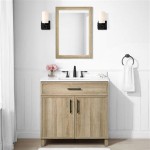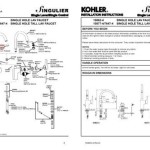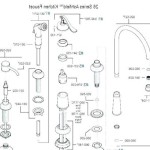Removing a Bathroom Vanity Mirror: A Step-by-Step Guide
Bathroom vanity mirrors are a common fixture in many homes, adding both functionality and aesthetic appeal. However, there may come a time when you need to remove a vanity mirror, whether it's for a renovation, a replacement, or simply a change in style. While the process itself isn't overly complex, it's essential to approach it with care to avoid damage to the mirror, the wall, and yourself.
Understanding the Mirror's Installation
The first step in removing a bathroom vanity mirror is to understand how it was installed. Mirrors are typically secured to the wall using one of two methods: adhesive or mounting hardware. Adhesive-backed mirrors rely on a strong bonding agent to adhere to the wall. These mirrors are generally lightweight and can be removed relatively easily. However, mounting hardware mirrors are secured with screws, nails, or clips and require a more deliberate approach to removal.
Safety Precautions
Before you begin any removal process, it's vital to prioritize safety. Always wear appropriate safety gear, including safety glasses and gloves, to protect your eyes and hands from potential debris. Additionally, it's crucial to have a clear workspace to avoid any tripping hazards. If the mirror is large or heavy, enlist the help of another person for assistance.
Removing Adhesive-Backed Mirrors
Removing an adhesive-backed mirror involves carefully loosening the bond between the mirror and the wall. The easiest method is to start at one corner of the mirror and gently pry it away from the wall. A putty knife or a plastic scraper can be useful tools for this purpose. Apply gentle pressure while working slowly to avoid cracking or shattering the mirror. If the adhesive is proving resistant, use a hairdryer to warm the adhesive, making it more pliable and easier to release.
Removing Mounting Hardware Mirrors
Removing a mounting hardware mirror requires a bit more precision and care. Start by identifying the mounting points on the back of the mirror. Depending on the type of hardware, you might find screw heads, nail heads, or clips. To remove screws or nails, use an appropriate screwdriver or hammer and carefully loosen them, working from the center outwards to avoid stress on the mirror. If clips are used, locate the release mechanism and gently pry them loose. Once the hardware is removed, you can carefully lift the mirror away from the wall.
Cleaning Up
After removing the mirror, it's essential to clean the wall surface. If adhesive residue remains, you can use a commercial adhesive remover or a combination of warm water and mild detergent. For stubborn residue, you can try using a plastic scraper or a razor blade, but be cautious to avoid scratching the wall surface. Once the area is clean, you can inspect the wall for any damage and make necessary repairs before installing the new mirror.
Replacing the Mirror
Once the old mirror is removed and the wall is cleaned, you can install a new mirror. If you're replacing with an adhesive-backed mirror, ensure the wall surface is clean and dry. Apply even pressure to the mirror for a secure bond. For mounting hardware mirrors, follow the manufacturer's instructions for installation. Make sure the hardware is securely fastened and the mirror is level before leaving it to set.

How To Remove A Bathroom Mirror Lowe S

How To Safely And Easily Remove A Large Bathroom Builder Mirror From The Wall Site Title

How To Remove Mirror Off Wallsafely

How To Remove A Bathroom Mirror Lowe S

How To Remove A Frameless Mirror Like Nervous Grandma

How To Safely And Easily Remove A Large Bathroom Builder Mirror From The Wall Site Title

How To Safely And Easily Remove A Large Bathroom Builder Mirror From The Wall Site Title
:strip_icc()/Design_CathieHongInteriorsPhoto_ChristyQPhotography-b2290decbe0e4d0b952f280fb7bdc896.jpg?strip=all)
How To Remove A Bathroom Mirror From The Wall

How To Safely And Easily Remove A Large Bathroom Builder Mirror From The Wall Site Title

How To Remove A Mirror Glued The Wall Forbes Home
Related Posts







